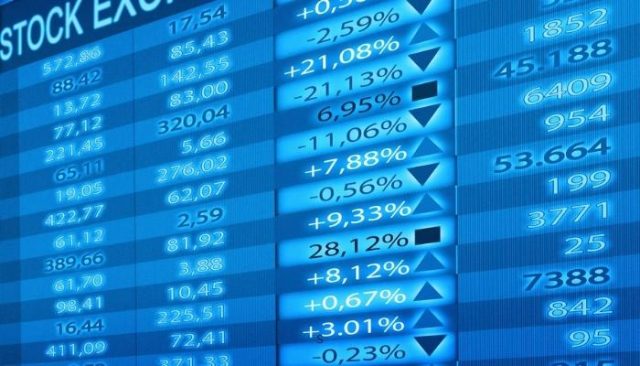The Basic Of Outstanding Shares: Explained By An Expert (2024)
By Wilbert S
January 10, 2024 • Fact checked by Dumb Little Man

Want to jump straight to the answer? The best Stock Brokers are Tradestation and Tradier
The #1 Stocks and Forex Trading Course is Asia Forex Mentor
Every investor strives to make his or her company, as well as the shares in the business, worth something because a business’s shares represent the corporation’s value. A company may also offer shares as a perk to draw in skilled people who can increase the company’s profitability. Additionally, shares can be used as payment for items like trade secrets that increase the value of a company’s inventory.
When a corporation raises funds by issuing new stock to the public or announces a stock split, the number of outstanding shares will rise (the company divides its existing shares into multiple shares to improve liquidity).
According to Ezekiel Chew, a corporation’s ability to do business effectively depends on having the appropriate number of shares of stock available for usage. In this article, we outline a few fundamentals of outstanding shares that may be useful for business owners trying to determine whether their businesses have the appropriate number of shares.
What are Outstanding Shares

The number of a company’s shares exchanged on the secondary market and hence accessible to investors is known as outstanding shares. All restricted shares held by the company’s executives and insiders (senior personnel) are included in the outstanding shares and those held by investors like mutual funds, pension funds, and hedge funds.
In the liabilities section of the company’s balance sheet, outstanding shares are the shares that the company’s shareholders still hold at the time of the calculation, minus any shares bought back by the company.
Additionally, from the initial stock issued and stock repurchases, a firm frequently holds a percentage of the outstanding shares of stock in its treasury. These are referred to as “treasury shares” and are excluded from the balance.
Simple categorization into Basic and Diluted shares for all outstanding shares is possible. The fully diluted number considers warrants, capital notes, and convertible stock, whereas basic shares refer to the number of outstanding shares currently in existence. The completely diluted number of outstanding stocks then informs you of the maximum number of outstanding ones that could exist.
Finding the Number of Outstanding Shares

In addition to listing outstanding shares on the company’s balance sheet, publicly traded companies are required to file the number of issued and outstanding shares. They typically package this information within the investor relations sections of their websites or on regional stock exchange websites. The following expresses the process of finding the number of outstanding shares:
- Look at the shareholders’ equity part of the company’s balance sheet, which is near the bottom of the document.
- Identify preferred shares in the line item. This line refers to a unique class of shares that offers shareholders benefits like a regular dividend. There might not be any preferred shares at all.
- Focus on common stock in the line item. The primary class of stock offered to investors is this one. The number of outstanding shares should be mentioned in the line item description. Maintain the quantity of outstanding ordinary shares.
- Look for “treasury stock” in the line item. If the company has never repurchased shares from investors, there won’t be a line item for it. This line pertains to those shares. If one exists, the number of shares repurchased should be stated in the line item description. Keep this number handy.
- The amount of outstanding treasury shares is subtracted from the total number of outstanding preferred and common shares. The total number of outstanding shares is the outcome.
Stock Splits and Share Consolidation

When a firm announces a stock split, its shares are issued in an amount greater than before, but its market capitalization stays the same. Existing shares were split, but the fundamental value remained the same. The price per share decreases with an increase in the number of shares.
Stock splits are carried out to increase liquidity and lower the cost of shares for a variety of investors who previously could not purchase them due to the company’s high share prices. Bonus shares and stock splits are frequently misunderstood. Bonus share issuance affects the firm’s declared share capital, even though a stock split divides its authorized share capital.
On the other hand, share consolidation, commonly referred to as a reverse stock split, is a procedure used to decrease the overall number of shares outstanding while simultaneously raising each share’s nominal and par value. A company may typically initiate a reverse split or share consolidation to get its share price into the minimal range required to meet exchange listing requirements.
Blue chip Stock in a Company’s Market Capitalization

Shares of huge, well-known corporations with a track record of reliable financial performance are known as “blue chip stocks.” These stocks have a reputation for being able to withstand challenging market situations and deliver strong returns during favorable market conditions. Blue chip companies typically have high stock prices since they have a solid reputation and frequently dominate their respective markets.
This phrase gained popularity after Gingold observed multiple stocks trading at $200 or higher per share while standing next to the stock ticker at a brokerage business. He wrote an article about them and referred to them as “Blue Chip Stocks.” Since then, the phrase has been used to describe highly valued stocks, although it is currently more frequently used to describe high-quality stocks.
These kinds of stocks often offer greater long-term returns. In the poker game, the blue betting disk has the highest value, and the white one has the lowest. Some individuals liken blue chip stocks to blue betting disks.
Share Repurchase Programs

A repurchase occurs when a company purchases stock on the open market to remove those shares from the total outstanding.
It may appear illogical for a company to decide to return equity capital, given that firms raise equity funding through the sale of regular and preferred shares. However, there are several circumstances in which a firm can benefit from repurchasing its shares, among which include;
The need to reduce the number of shares can be accretive to earnings per share, making the company more attractive to investors.
- Companies often use a repurchase program to offset the dilution from employee equity compensation awards.
- Appease shareholders seeking to have excess capital returned.
- A repurchase can help companies manage their capital structure—the debt to equity balance.
Numerous companies act as lenders and capital market partners for most publicly traded corporations. For the execution of repurchase, corporations frequently collaborate with their credit providers and one or two capital market partners that are not lenders but instead offer top-notch research coverage and assistance to institutional investors. While some businesses use one exclusive partner exclusively for their repurchase implementation, others choose to switch between several different service providers.
The Basics of Shares Outstanding

The share capital of a firm is calculated using the total number of outstanding shares, equal to the total number of outstanding shares times the current share price. The total number of outstanding shares divided by corporate earnings is also used to determine earnings per share. The two essential investor measures used to assess a company’s current market value and overall performance are market capitalization and earnings per share.
The total number of outstanding shares is shown on your business’s balance sheet under the heading “Capital Stock Issued and Outstanding.” The total number of preferred stock shares and common stock shares can be added together, and the total number of treasury shares can be subtracted to determine the total number of outstanding shares. Other techniques for calculating the number of outstanding shares include examining the market capitalization, EPS, or cash flow per share of the corporation (CFPS).
Outstanding vs Authorized Shares

As previously emphasized, the volume of a company’s shares exchanged on the secondary market and accessible to investors is known as outstanding shares. All restricted shares held by the company’s executives and insiders (senior personnel) are included in the outstanding shares and the equity held by investment firms like mutual funds, pension funds, and hedge funds.
However, the total number of shares a corporation is legally permitted to issue is known as the authorized shares and is indicated in the corporation’s charter. When a startup’s charter is first submitted, the number of authorized shares must, at a minimum, take into account the shares that will be issued to the founders, the shares that will be held back for issuance under any stock option plans, and any other securities that the startup will likely issue or promise to issue in the future.
Businesses must first deal with the administrative burden of obtaining necessary board and stockholder approvals. This is necessary to increase the number of authorized shares of common stock before filing a charter amendment in their state of incorporation. If they do not have a margin of authorized shares above the number of already issued shares.
Investors can calculate financial ratios more precisely by being aware of the distinction between authorized and outstanding shares. For instance, using the number of outstanding shares to calculate earnings per share (EPS) may lead to overstated gains. However, utilizing the number of authorized shares may significantly reduce a realized loss. To accurately estimate a company’s financial stability and profitability, investors need a solid grasp of these underlying concepts.
Best Stocks and Forex Trading Course

The best Forex trading course is the One Core Program from Asia Forex Mentor by Ezekiel Chew. While trading skills are lucrative, it may take you so long to grasp what works and what doesn’t. It builds your skills from the viewpoint of a new trader with fear into an advanced trader working with strategies.
Your best option is a great course. Trainers and mentors are aware of what will help you conquer the markets. Fumbling alone can waste your chance at a lifetime career in trading. A course helps you fast-track on a tried and tested model.
Many traders make a final stop at the One Core Program. Which is among the top ten credible courses you can bank on? Traders go on to hit six-figure trades following a proven model. It’s a course that has helped retail and institutional traders transform their trading careers.
| RECOMMENDED TRADING COURSE | REVIEW | VISIT |
|---|---|---|
 | #1 Forex, Crypto and Stocks trading course. Ranked most comprehensive by Investopedia and Best by Benzinga. Free to Try! |  |
Featured Investing Broker of 2024
| Broker | Best For | More Details |
|---|---|---|
 | Advanced Non US Traders Read Review | securely through Avatrade website |
 | Intermediate Non-US Traders Read Review | securely through FXCC website |
Overall Broker | securely through Forex.com website | |
 | Professional Forex Traders Read Review | securely through Interactive Brokers website |
| Broker | Best For | More Details |
|---|---|---|
 | Advanced Traders Read Review | securely through Tradestation website |
 | Intuitive Platforms Read Review | securely through Tradier website |
 | Powerful Services at a Low Cost | securely through Tradezero website |
 | Professional Forex Traders Read Review | securely through Interactive Brokers website |
Conclusion: Outstanding Shares

It’s crucial to understand what outstanding shares are and which numbers a company utilizes because the gap between the number of authorized shares and those in circulation can be rather considerable. The basic number of outstanding shares may be used in some ratios, while the diluted number may be used in others. This may change your perspective on a particular investment and significantly impact the stats.
Investors can also determine the degree of ownership and autonomy that insiders have within the company by comparing the number of restricted shares to the number of shares in the float. Investors should consider these circumstances before deciding whether to buy or sell.
Knowing that a company’s outstanding share count may fluctuate is very important. For example, the difference between the number of shares currently outstanding and the number of shares fully diluted is comparatively likely to be significant for rapidly growing technology companies. These businesses use convertible debt and stock incentives to finance their expansion effectively. In contrast, many older, venerable businesses will likely have an identical number of outstanding shares to their fully diluted share count.
Outstanding Shares FAQs
Is it good to have Shares Outstanding?
For a few reasons, knowing how many outstanding shares a company has is essential. One is that finding a company’s market capitalization or overall value can be aided by knowing how many numbers of outstanding shares. To get a company’s market capitalization, multiply the share price by the number of outstanding shares.
A company may decide to issue additional stock if it has authorized more shares than it presently has outstanding, so it is crucial to understand how many shares are outstanding. The value of the current shares may decline if the firm decides to sell some of the extra permitted shares. Typically, the value of existing shares declines more rapidly the more shares the company sells.
How do you calculate number of shares ourstanding?
Prospective investors can calculate the total number of shares a firm has issued and deduct the number of shares it has repurchased to get the number of shares in circulation. The equation is:
shares outstanding = shares issued-treasury stock
The annual report of a corporation includes information regarding the number of shares outstanding on the balance sheet.
Wilbert S
Wilbert is an avid researcher and is deeply passionate about finance and health. When he's not working, he writes research and review articles by doing a thorough analysis on the products based on personal experience, user reviews and feedbacks from forums, quora, reddit, trustpilot amongst others.


